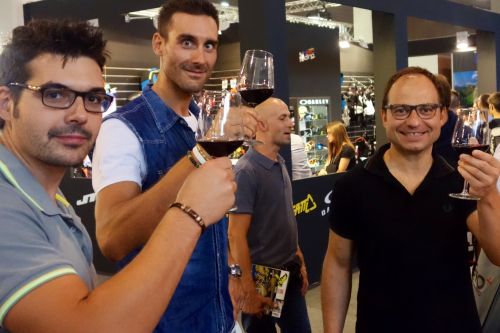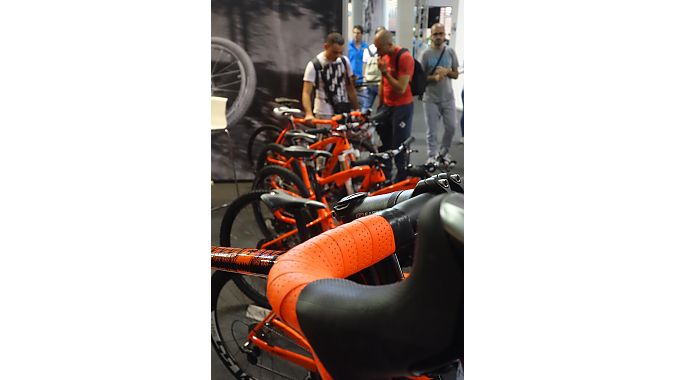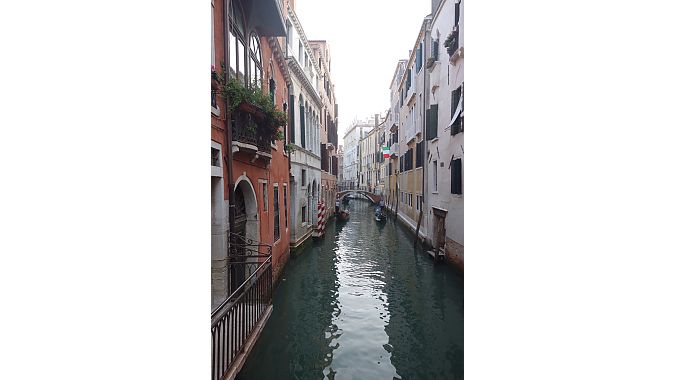PADOVA, Italy (BRAIN) — They do things different in Italy.
At ExpoBici, the country’s largest bike show, lunch is often a leisurely affair off-site, for several hours. Inside, eye-popping neon-colored road (and 'cross, mountain and electric) bikes fill some booths, while Lycra-clad, high heeled show models are also abundant. Superlight hardtail mountain bikes are all the rage and local wine is available by the glass or the bottle in the middle of the show floor.
And, most surprising to Americans: The show caters to trade and consumer visitors (the latter more often called entusiasti) throughout.
Combining trade and consumers is controversial at U.S. shows; Interbike only began allowing consumers on a limited basis, for one day, last year. Denise Muraro, the Italian event’s project director, just shrugs when asked how it works.
“The exhibition was really designed like that from the beginning," said Muraro, who is in charge of the event for the Padova Fiere, the fairgrounds exhibit space for this city of 215,000 that's 20 miles west of Venice. "We thought from the beginning that cycling here needs a big event for communication from the industry to the consumer and the trade,” she said.
Northern Italy is renowned for its bicycle suppliers, from Campagnolo to Pinarello, but Muraro said the consumer market is less developed there.
While Eurobike remains the 800-pound gorilla in Europe, the Padova show attracts retailers, especially from southern Italy, who don’t want to drive all the way to Germany.
“It’s not cheap to do this show. If it were only retailers, it wouldn’t be worth it" — Charlie Hancock.
“It’s an expensive trip to Eurobike. It’s a six- or seven-hour drive and from Sicily you can’t really drive. But you can take a train here easily,” she said.
Visitors pay 8 euros ($10) to get in; exhibitors are given free tickets to distribute to their retailers and other VIPs.
While the show is open to consumers and retailers all three days, Monday is informally considered the “trade day,” because most Italian bike shops are closed Mondays. So while the consumers go back to work, the retailers come to do business. Some supplier executives come to the show on Monday only.
ExpoBico has grown rapidly since its start seven years ago. For a while, it competed head to head with nearby shows produced by the Italian two-wheel vehicle trade association, EICMA. But two years ago ExpoBici reached a three-year no-compete agreement that has ExpoBici paying EICMA a portion of the exhibiting fees from the organization’s members who show there. Since that agreement, the Padova show has grown even more rapidly.
“The first five years were a battle. The competition with EICMA was really, really bad," Muraro said. "It’s much better now to be focused on just making the exhibition better.”
Charlie Hancock, owner of the Italian distributor Charlie S.p.A. and an early supporter of the Padova show, said combining a trade and consumer show made a much more enticing event for him.

“It does create an awkward issue, you need to ask people, 'Are you a dealer or a consumer?’ But it’s not a big issue. We have information for each. And we have people who pick stuff up and ask, 'Where do I pay?’ ”
Hancock’s company distributes Enve, Hutchinson, BBB and other brands that benefit from the consumer marketing the show provides. Rather than seething over the presence of consumers, retailers appreciate that Charlie is marketing the brands to them.
“It’s not cheap to do this show. If it were only retailers, it wouldn’t be worth it,” he said.
This year the show attracted 350 exhibitors, representing 520 brands. Muraro said that was “a bit more than last year. Most of the big brands are already here: we can’t invent new companies,” she said.
Exhibitors included Trek Bicycle, which hasn’t displayed at Interbike or Eurobike in several years, opting for private showing to its retailers instead. Shimano Italia — the new subsidiary distributor of the brand in Italy as of July — also had a large display, as did Scott Sports and Dorel’s Cannondale and GT brands. Specialized was one of the most notable no-shows.
The 2014 show was crowded from beginning to end. At the Test Day, long lines formed in front of the Pinarello, Trek, Scott and Cannondale tents, especially. Although Pinarello brought more than 50 bikes, there was a more than a one-hour wait to try a 54 centimeter model on Friday afternoon.
Indoors in Padova, all three days were crowded. Muraro said the first day attracted 22,000 visitors, up from 17,000 on the first day of the 2013 show. Attendance figures for the following days were not yet available, but the crowds appeared similar. Even on Monday, the trade day, it was sometimes hard to push one’s way through the crowds in the aisles.
Aside from the major brands on display, the show features many consumer-oriented exhibitors who would not likely attend a trade-only show. They included travel and tour companies and displays from regions, events and communities hoping to attract cycling visitors. Vendors sell classic bike clothes and equipment for Italy's popular vintage bike rides. Other operations sell overstock bike products at outdoor tents between the show halls.
“For the public, it’s good to come out with something in your purse, you know? People like that, but we don’t allow the sales indoors because we don’t want it to be like a farmer’s market,” Muraro said.






















